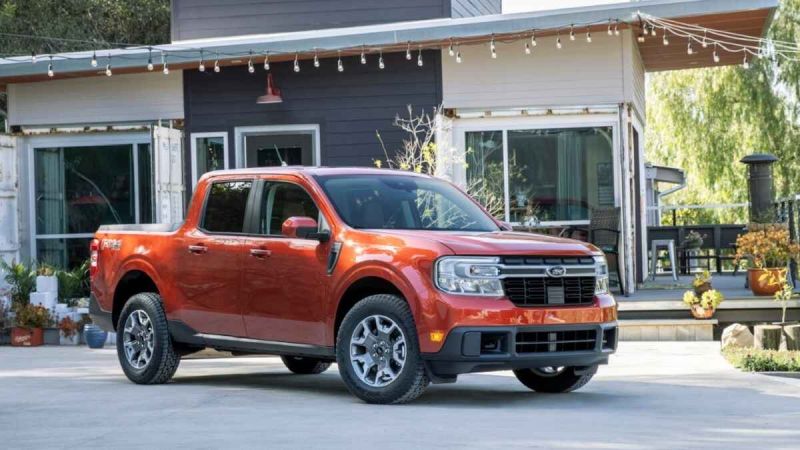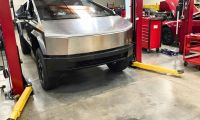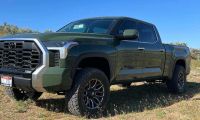Have you noticed something funny in the last several weeks? It's straightforward, so we'll wait until you figure it out before we give it away. Okay, can't wait for the answer, we'll give it to you. Here it is: it's getting dark earlier and earlier every day.
No Real Magic In SeasonsStorms Have Already Brought Western Snow
For drivers at the highest elevations, the storms meant chaining up with full snow chains, as the highest mountain passes usually require these snow-biting devices. At the same time, drivers suddenly adjusted their driving techniques to driving in the ice and snow. As is often the case, it wasn't too early to begin the transition from bare road driving to driving in the ice and snow.
Since the snow also came while the leaf-peeping season was still in full force in the northern tier, the snow was mixed with leaves at altitude. Meanwhile, in the rains at lower elevations, the leaves falling from the trees left the roads in bad shape with a combination of greasy leaves laying upon roads that hadn't seen rain in some time.
The result was a mess, and drivers were either pressed to either slow down or pull over until things abated and the leaves dried out a bit. Did the waiting game work? No, not really, as things turned out. The reason is that leaves seldom dry out all at once. For example, in New England, when the leaves drop off the trees in wet weather, the top layers of leaves dry out, leaving the lower layers still wet. In this situation, the lowest layers of leaves slide over one another, making the roads greasy. The leaves may look dry on top, but as you drill down through the layers, the leaves are sopping wet, and those wet leaves are as slippery as ice.
So, how do you drive when fallen leaves cover the roads? Like driving in snow, you have to slow down and allow extra room between you and the vehicles in front of you. Generally, instead of leaving one to two vehicle lengths between you and the vehicles ahead, you should allow three lengths.
How To Determine Distance
How do you determine the correct number of lengths? It is elementary.
- First, look for a convenient landmark at the road's edge
- Second, when you reach the landmark (phone pole or fence post or sign), begin to count
- Third, count 1-1,000, 2-1,000, 3-1,000. By the time you get to three, you will be at the proper distance
Also, it would help if you remembered to slow down when driving on leaf-strewn roads (or snowy roads, for that matter). In a front-drive vehicle, it is a good idea to downshift into a low gear or first gear if you can and keep it slow. If you are in a vehicle like the Ford Maverick Hybrid with its continuously variable transmission, the vehicle will slow dramatically after lifting off the accelerator. This is because the vehicle is always in gear. It would help if you shifted into first in vehicles with a multiple-gear transmission, such as older Ford Fusions. Shifting into a low-low (creeper) gear will work if you are driving an all-wheel-drive or 4X4 vehicle.
If you find your vehicle skidding, there is only one move: stay off the accelerator and let the vehicle slow down enough to get it back into control. Remember to drive the vehicle in the direction you want to go as you slow down to regain control. In most recent vehicles, you will find that with automatic braking (ABS), you should leave your foot on the brakes as you slow down and let the ABS work. Don't jam your foot down, as your vehicle will skid worse. If your vehicle is older and may not have ABS, hit the brakes and let off in a series of quick movements, bringing your vehicle back under control.
Driving at this time of year is challenging because of the early dark and possible leaf-covered or snow-covered roads. However, if you use common sense and slow down, you will be all right.
Marc Stern has been an automotive writer since 1971 when an otherwise normal news editor said, "You're our new car editor," and dumped about 27 pounds of auto stuff on my desk. I was in heaven as I have been a gearhead from my early days. As a teen, I spent the usual number of misspent hours hanging out at gas stations Shell and Texaco (a big thing in my youth) and working on cars. From there on, it was a straight line to my first column for the paper, "You Auto Know," an enterprise I handled faithfully for 32 years. Not many people know that I also handled computer documentation for a good part of my living while writing YAN. My best writing, though, was always in cars. My work has appeared in Popular Mechanics, Mechanix Illustrated, AutoWeek, SuperStock, Trailer Life, Old Cars Weekly, Special Interest Autos, etc. You can follow me on: Twitter or Facebook.












